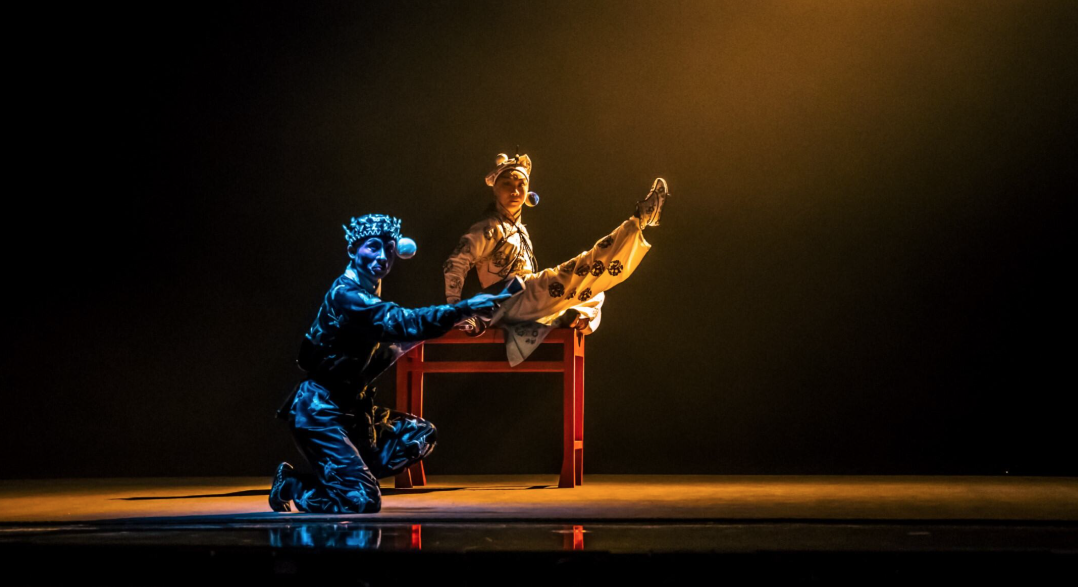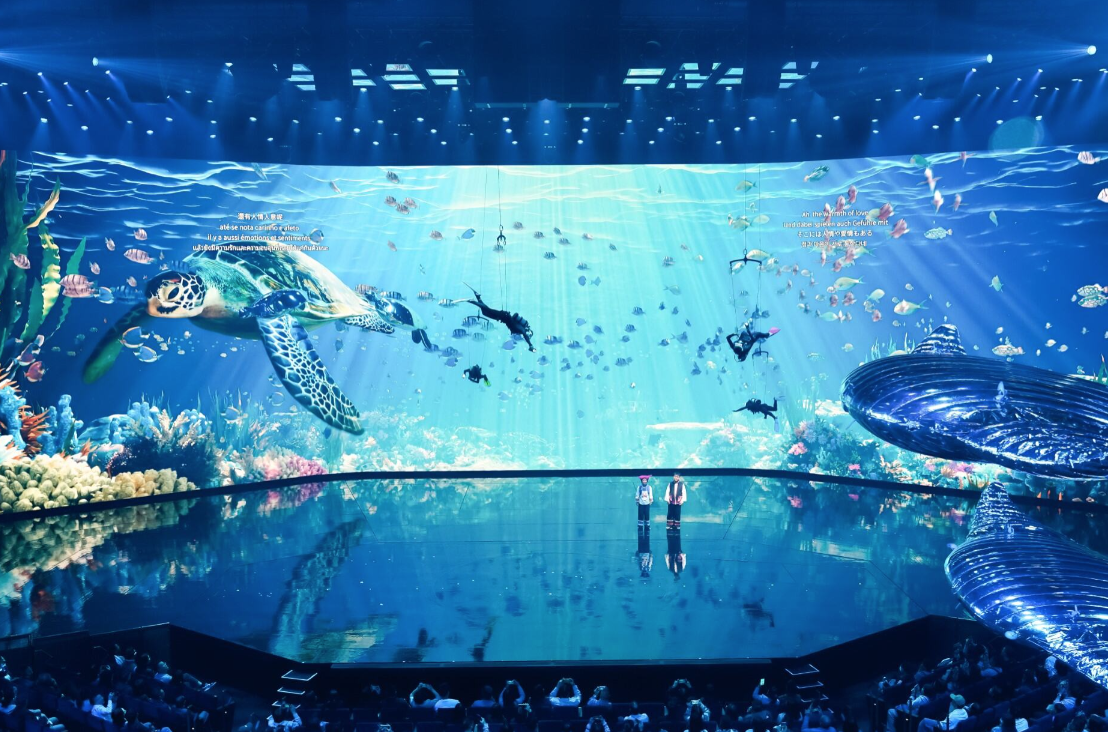David Ho journeys to Macau for a preview of Macau 2049, the new residency show at MGM Macau directed by Zhang Yimou
As one of China’s most acclaimed filmmakers, Zhang Yimou is best known for his stellar filmography and work with cinematic legends like Gong Li. But it should also be noted that the famed auteur knows how to put on a live spectacle as well. Zhang, who had previously directed the 2008 and 2022 Beijing Olympics opening and closing ceremonies, is now directing the Macau 2049 residency show at MGM Macau. This marks his first and only residency in the Greater Bay Area and was seven years in the making with a massive crew of 582 people from 20 teams around the world.

Staged at the newly upgraded MGM Theatre in MGM Cotai, Macau 2049 is a showcase of Chinese cultural heritage that is divided into eight acts, each incorporating cutting-edge technologies to give it a contemporary feel. If one feels this is akin to say, Steven Spielberg directing a Vegas show, it’s a description that would not be too off the mark.
“Having weathered the trials of time, Macau remains vibrant and resilient, connecting herself to the world while grounding in her Chinese cultural roots, brimming with new dynamism,” says Zhang. “Macau 2049 brings together the two ends of time and space at this moment, converging horizons of East and West in this place. We seek harmony without uniformity, thus celebrating the diversity of civilizations around the world. I hope this show in Macau will create an unparalleled performance for everyone with experiences unlike any other.”

The show’s first act kicks off with hua’er folk music. As the genre’s name translates to ‘flower’, it should be no surprise that these folk songs in the genre are sung by various ethnic groups across the provinces of Qinghai, Gansu, Ningxia, and Xinjiang as they work in nature. But in Macau 2049, the music is given extra weight with a modern dancer interacting with the shadows cast by giant IRB2600 robotic arms equipped with intelligent sensors.
Personally, the first act brings to mind the 2016 kinetic sculpture by Chinese artist pair Sun Yuan and Peng Yu, which was shown at the Guggenheim Museum. As the dancer moves to the music and the shadows, his interactions with the shadows are cast across a white backdrop for an impressive display of precision and movement.

The second act spotlights the art of khoomei, the Mongolian form of throat singing that is included in the Representative List of the Intangible Cultural Heritage of Humanity of UNESCO. The hypnotic singing, which sees a singer produces two distinct vocal sounds simultaneously, is used as a bridge between the nomadic tribes of the Mongolian Plateau and the nature.
This performance was highlighted by a piece of ‘dancing’ fabric that was brought to life by an air fountain installation with 16 fans that generate an impressive airflow of 3200 cubic meters per minute. As the fabric danced like a flame in the air, the backdrop also worked overtime to overwhelm the senses with a screen display that showed a natural landscape in dazzling colours.

The visual overload continued with a third act that showed the Miao ethnic group dancing along to their folk songs with an array of 108 kinetic mirrors and 72 laser lights, each equipped with motion sensors that detect environmental changes and create reflections of varying angles and light intensities. The act was very fitting with Macau’s ‘more is more’ philosophy, but perhaps a tad too much for some at this point.

Fortunately, the next act gives us a welcome change. We are presented with a martial arts play from the Peking Opera Sanchakou, inspired by a tale from The Generals of the Yang Family epic. It tells the tale of a misunderstanding in the dark between the bodyguard Ren Tanghui and the innkeeper Liu Lihua. The two performers give us an impressive martial art display akin to what you’d see in a Bruce Lee, Jackie Chan or Donnie Yen kung-fu flick. The act ends with a contemporary (and somewhat unnecessary) parallel being drawn to social media with a group of dancers sporting iPad faces.

Now past the halfway point of the show, Macau 2049 continues on the same thread by giving us the lively Yangge folk dance from Northern China in the next act. Here, the exaggerated and comedic dancers find themselves replaced by a bunch of H1 humanoid robots developed by Unitree Robotics, a company also from Northern China. The act is an interesting one as it brings to mind the robot dancers that a young Britney Spears danced with at award shows around the turn of the millennium. With so many professions now facing the possibility of being replaced by Artificial Intelligence (AI), it is also a timely meditation on the issue.

The sixth act gives us another ethnic music, with the focus being on Yi Song, the traditional music of the Yi people in Yunnan, China. But this time, we are given a backdrop that shows a journey through the waters of Yilong Lake. It is brought to life with bionic flying devices that mimic sea creatures. Floating from the stage to above the audience, it had a touch of theme park magic.

Near the end of the show, we are also treated to a performance art closer to home for us in the seventh act. Six teams of lion dancers from Hong Kong give the audience an acrobatic performance punctuated by a kinetic sculpture that become a seventh lion. With the giant screen behind programmed to sequentially rotate 49,404 gold brick pixels, it became a glimmering golden lion of epic proportions.

Closing the show in the eighth and final act are a trio of storytellers from North Shaanxi province. With their vocals and three-stringed musical instruments, the group’s lively narration was enhanced by seven 34W full-colour laser lights, each emitting ten light beams, creating a spectacular display of 70 light formations on stage. It culminated in a shower of golden balls that reminds one of an act earning the golden buzzer on the Got Talent reality shows.
Macau 2049 draws on Zhang Yimou’s influences across his different eras, be it the rural cultures showcased in his early works, the bombastic elements of his big box-office epics, or his Olympics ceremony triumphs.

Running at just over an hour, the show packs a lot in. There is clearly a lot of thought put into marrying the traditional performing arts with contemporary technologies. However, explanations between each act mars the flow of the show and makes it feel more like an educational experience than full entertainment. It would have benefitted immensely if all acts were tied to by a narrative thread or arc.
Furthermore, the addition of more acrobatic acts would allow Macau 2049 to better compete with the legacy of other Cirque du Soleil-inspired shows that have also resided in Macau, like The House of Dancing Water, which it will inevitably be compared to.
At the end of the day, Macau 2049 remains a grand display of Chinese traditional performing arts boosted by state-of-the-art technologies. It is an interesting concept that makes for a fun spectacle to watch when in town but would be better off with further streamlining and editing.

Verdict: Macau 2049 is an impressive visual treat for visitors to the city. It’s a grand display of Chinese traditional performing arts boosted by state-of-the-art technologies. It makes for an interesting experiment and though not without flaw, is worth a visit for the hour it takes up.





